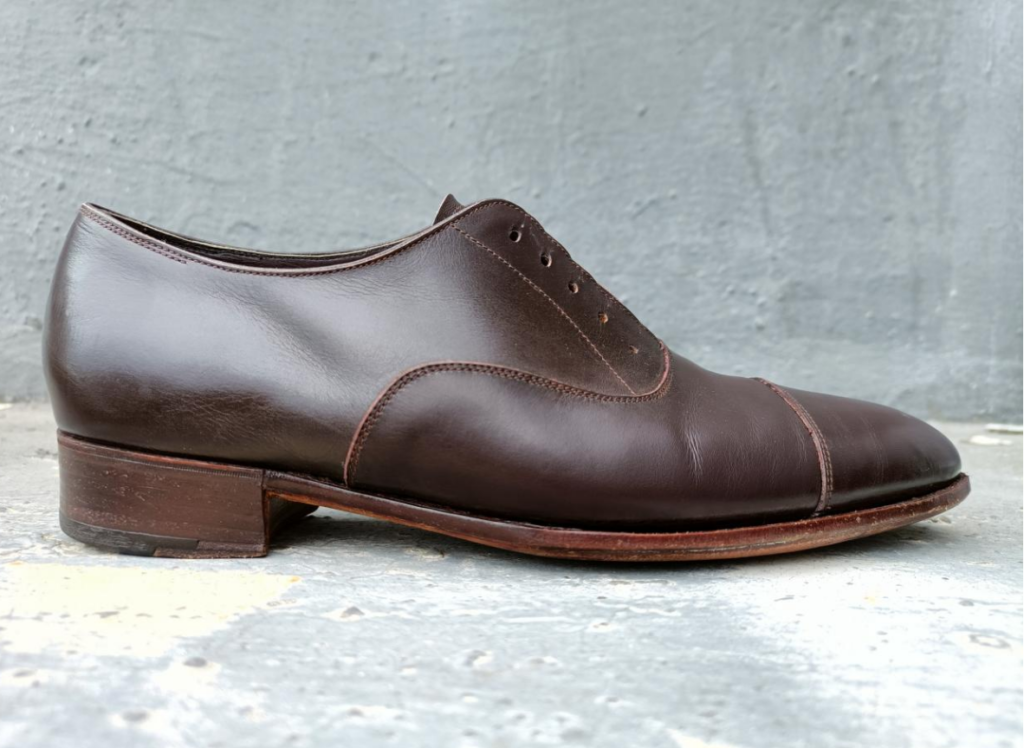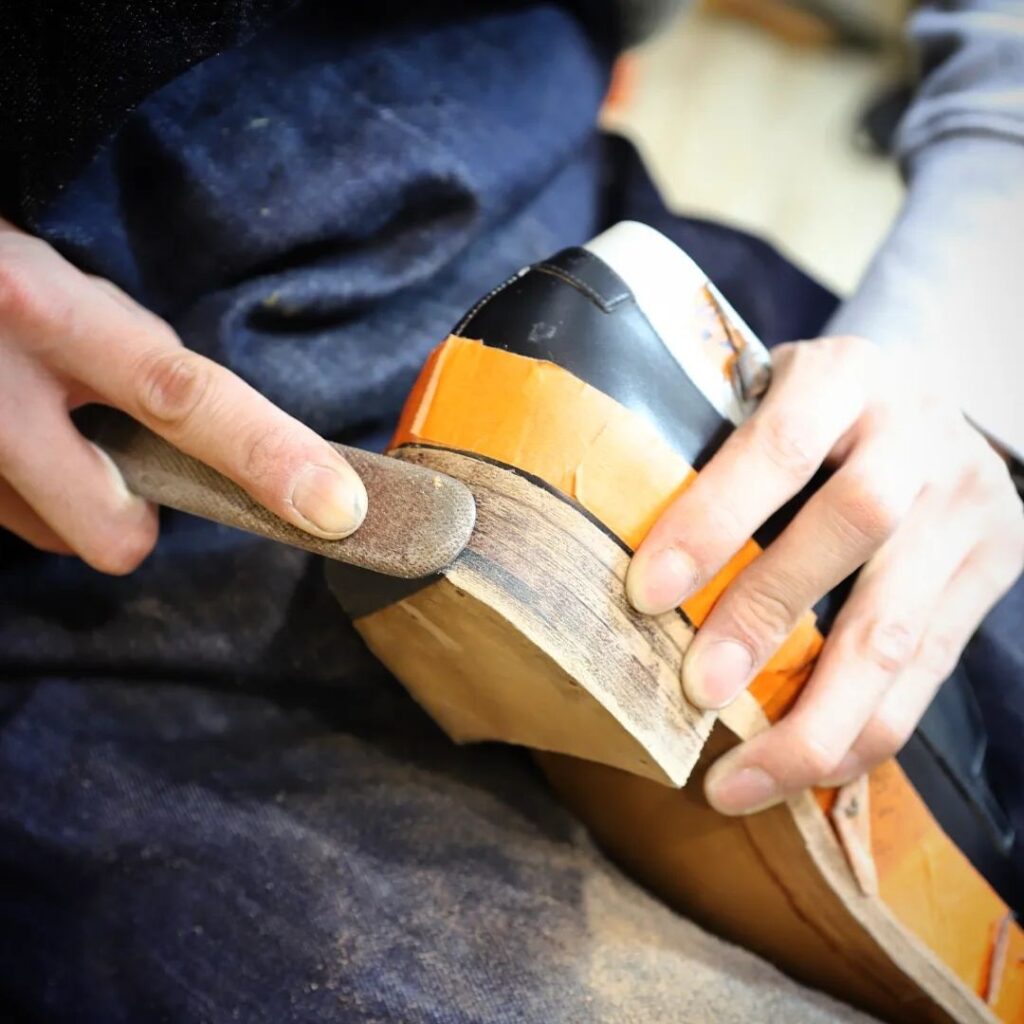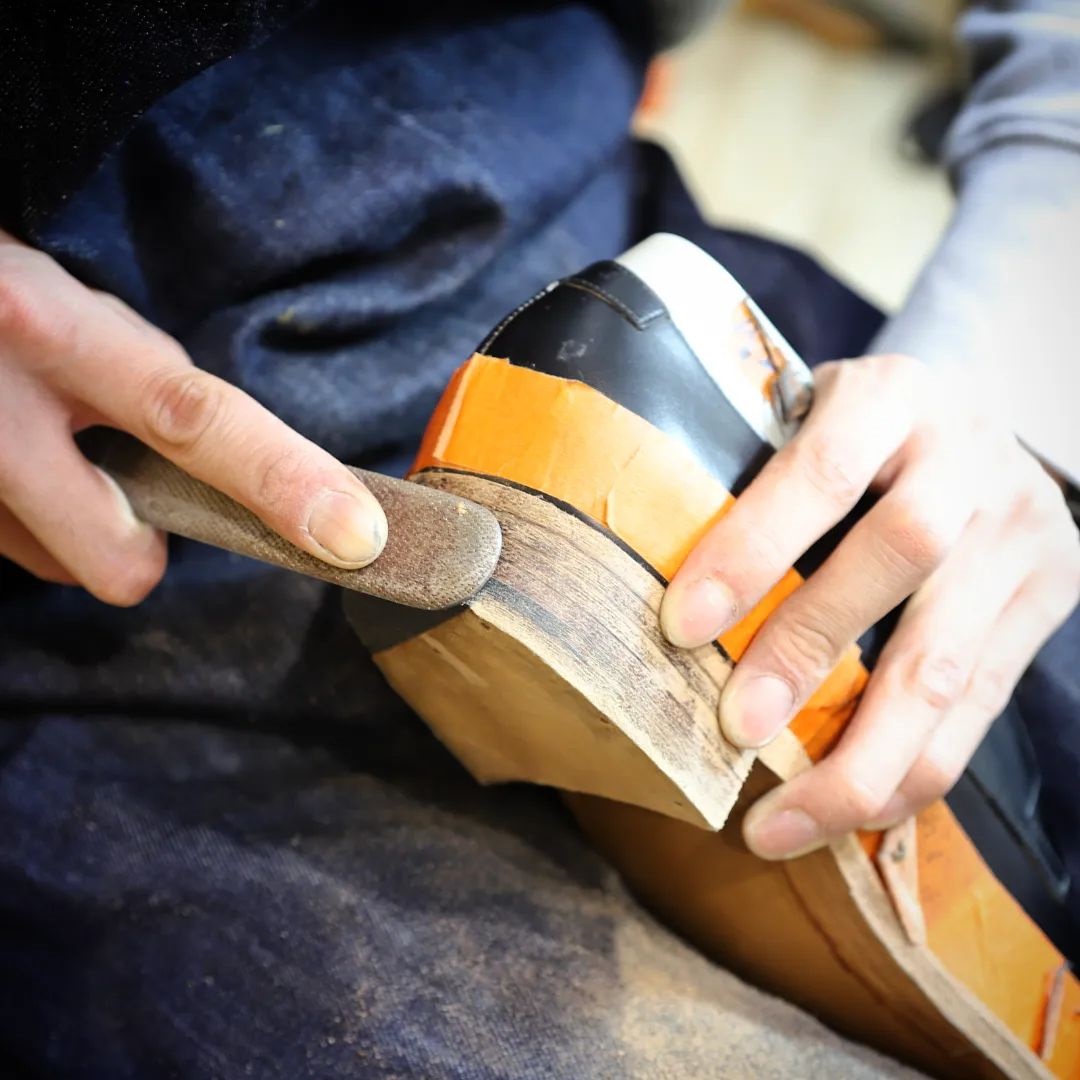I introduced an characteristics of British bespoke shoes, called London Waist.

London waist is blind waist, but more important is the gentle aesthetic feature of the sole. Compared with the technical difficulty of hiding the line along the waist, the aesthetic experience is more touching.
What is English Heel?

The main feature is that the heel has an uninterrupted line from upper heel to heel bottom.
This is where I always pay attention when I look at shoes, I named it the heel lasting. The name is not totally right because the difference caused not only by lasting, but also the fineness of the heel grinding.
How did this flawless curve come out?
Completely grinded by hand.
Every shoe factory has the step of grinding edge of the sole with a rotating wheel, but the degree of delicate heel and the gap between upper and bottom are quite different.
Why is English Heel so rare?

Because it can only be achieved manually.
The force of the grinding wheel is quite heavy, although the upper is protected by a layer of film, but if the hand holding the shoe trembles a bit, the grinding wheel hits the upper of the shoe, and it is wasted. In order to achieve this flawless line, you can only hold a grinding tool and grind little by little.
It is said that John Lobb Paris once wanted to introduce this feature into Ready To Wear shoes, and when its Prestige collection launched, it did beat the peers. But compared with the original, the gap is still huge.

In terms of aesthetics, English bespoke shoes do pay attention to many aspects and provide a lot of inspiration for latecomers.

